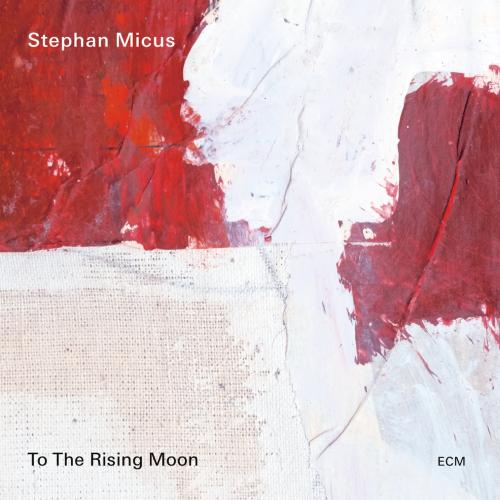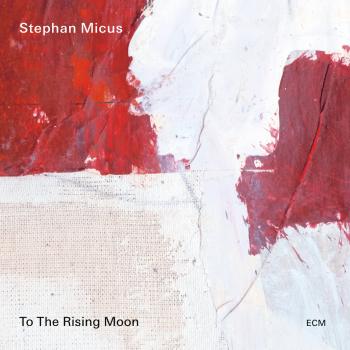
To the Rising Moon Stephan Micus
Album Info
Album Veröffentlichung:
2024
HRA-Veröffentlichung:
15.11.2024
Das Album enthält Albumcover Booklet (PDF)
Entschuldigen Sie bitte!
Sehr geehrter HIGHRESAUDIO Besucher,
leider kann das Album zurzeit aufgrund von Länder- und Lizenzbeschränkungen nicht gekauft werden oder uns liegt der offizielle Veröffentlichungstermin für Ihr Land noch nicht vor. Wir aktualisieren unsere Veröffentlichungstermine ein- bis zweimal die Woche. Bitte schauen Sie ab und zu mal wieder rein.
Wir empfehlen Ihnen das Album auf Ihre Merkliste zu setzen.
Wir bedanken uns für Ihr Verständnis und Ihre Geduld.
Ihr, HIGHRESAUDIO
- 1 To the Rising Sun 04:01
- 2 Dream Within Dream 04:04
- 3 In Your Eyes 05:20
- 4 The Veil 03:31
- 5 Unexpected Joy 04:20
- 6 Waiting for the Nightingale 04:35
- 7 The Silver Fan 02:56
- 8 Embracing Mysteries 07:00
- 9 To the Lilies in the Field 04:21
- 10 The Flame 03:57
- 11 To the Rising Moon 07:09
Info zu To the Rising Moon
To the Rising Moon ist Stephan Micus' 26. Soloalbum für ECM. Eingespielt wurde es mit Instrumenten aus Kolumbien, Indien, Xinjiang (China), Bayern, Kambodscha, Ägypten und Borneo, im Mittelpunkt steht allerdings die kolumbianische Tiple – eine Kastenhalslaute, die etwas kleiner ausfällt als die traditionelle akustische Gitarre. Der helle gezupfte Klang der Tiples wechselt sich mit dunkleren, gestrichenen Saitenklängen ab, die eine meditative Stimmung erzeugen. Erst im letzten Stück, „To the Rising Moon“, kommen die beiden Welten der gezupften Tiples und der gestrichenen Saiten endgültig zusammen. Es ist wie eine Hymne an etwas, das ewig dort oben am Nachthimmel steht, etwas Beständiges, während es auf der Erde darunter so viele Turbulenzen gibt. Wieder einmal nimmt uns Stephan Micus mit auf eine einzigartige musikalische Reise zu unbekannten Orten, die auf diese Weise niemand sonst hätte erschaffen oder spielen können.
Stephan Micus, Tiple, Tischharfe, Bogen gespielte Sape, Sattar, Nay, Dilruba, Stimme, kambodschanische Flöte, Akkordzither
Stephan Micus
Born in 1953 in Germany, Stephan Micus made his first journey to the Orient at the age of sixteen. Fascinated by the variety of musical cultures around the world Micus has travelled in virtually every Asian and European country as well as in Africa and the Americas. Studying with local master musicians he learned to play numerous traditional instruments, many of them unknown in the Western world. However, Micus‘s intention is not to play these instruments in a traditional manner, but rather to develop the fresh musical possibilities which he feels are inherent in them. In many of his compositions, which he performs himself, he combines instruments that have never before been played together. The resulting dialogues further reflect his vision of a transcultural music.
In addition to his exclusively acoustic instruments Micus also uses his voice, at times – with multitrack recording techniques – creating whole choral pieces by himself. The words he sings usually do not carry any known meaning. However, on Athos and Panagia he set to music ancient Greek prayers to the Virgin Mary, on Desert Poems he performed two original poems in English and on Life he has set to music an ancient Japanese Koan.
Many of Europe’s leading dance companies have chosen his work for their productions. He has performed hundreds of solo concerts over the last 30 years throughout Europe, Asia and the Americas.
He has studied a variety of instruments including guitar, concert-flute, sitar in Benares (India), flamenco guitar in Granada (Spain), shakuhachi (Japanese bamboo flute) and sho (Japanese mouth organ) in Kyoto (Japan), suling (Balinese flute) in Ubud (Bali), Uillean pipes in Carna (Ireland), sinding (African harp) in Gambia, dondon (talking drum) in Accra (Ghana), doussn’ gouni (African harp) in Bamako (Mali), duduki (Georgian oboe) and Georgian polyphonic choral singing in Tbilisi (Georgia), hné (Burmese oboe) in Yangon and Mandalay (Myanmar), duduk (Armenian oboe) in Yerevan (Armenia), bagana (Ethiopian lyre) in Addis Abeba, nohkan (flute of the noh theatre) in Kyoto (Japan), Bulgarian polyphonic choral singing in Plovdiv (Bulgaria), genbri (bass lute of the gnaoua) in Essaouira (Morocco), ryuteki (flute of the gagaku orchestra) in Kyoto (Japan), tama (talking drum) in Kafountine (Senegal), dung chen (Tibetan alphorn) in Kathmandu (Nepal).
In search of musical culture and context Micus has travelled extensively, in particular in India, Japan, Indonesia, Korea, Afghanistan, Morocco, Algeria, Tunisia, Thailand, Egypt, Burma, Sri Lanka, Turkey, USA, Canada, Israel, China, Gambia, Senegal, Nepal, Ladakh, Sinkiang, Venezuela, Tanzania, Argentina, Peru, Ghana, Mali, Jordan, Georgia, Ethiopia, Pakistan, Yemen, Cuba, Lebanon, Laos, Vietnam, Cambodia, Uzbekistan, Kyrgyzstan, Cabo Verde, Mauretania, Armenia, Karabagh, Siberia, Mongolia, Namibia, Iran, Tajikistan, Botswana, Sarawak, Colombia, Mozambique, Ecuador.
Booklet für To the Rising Moon










